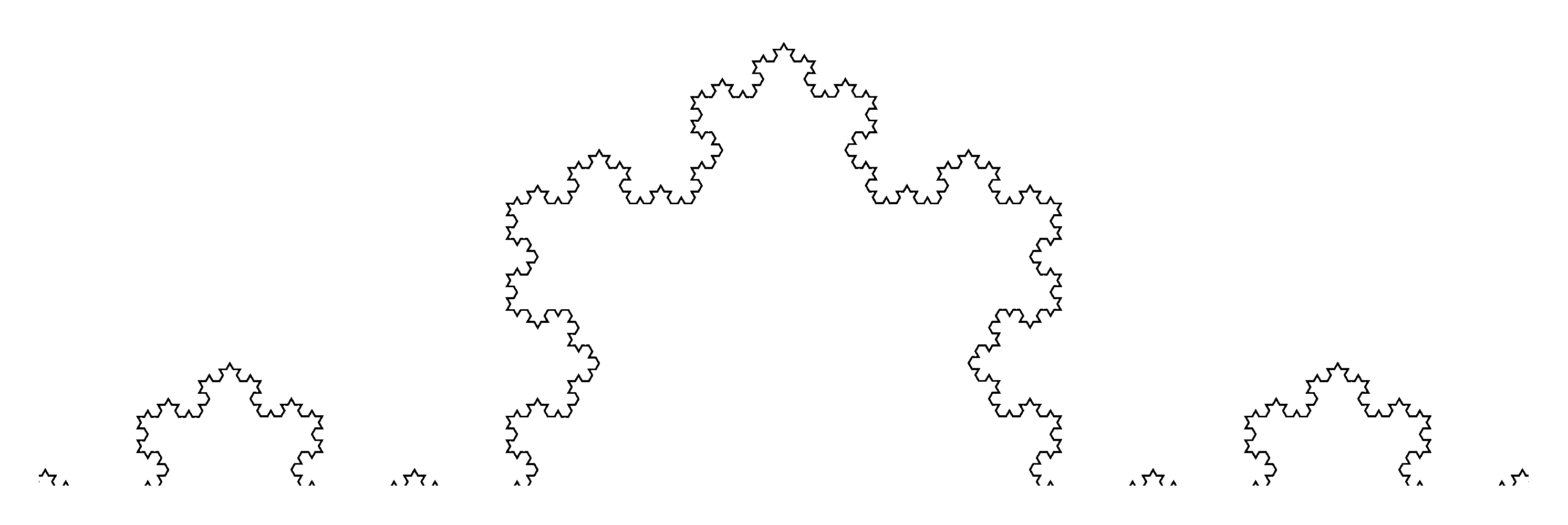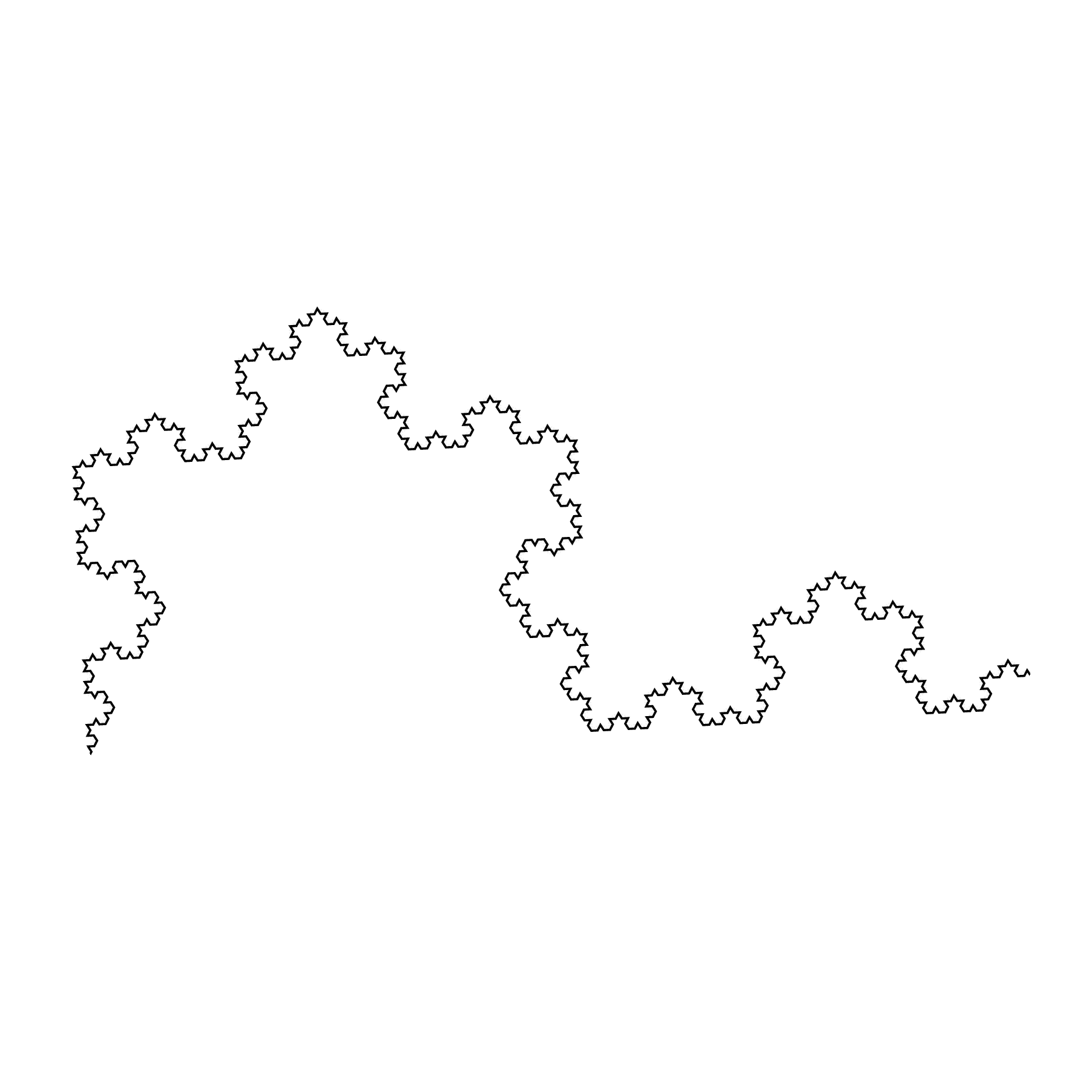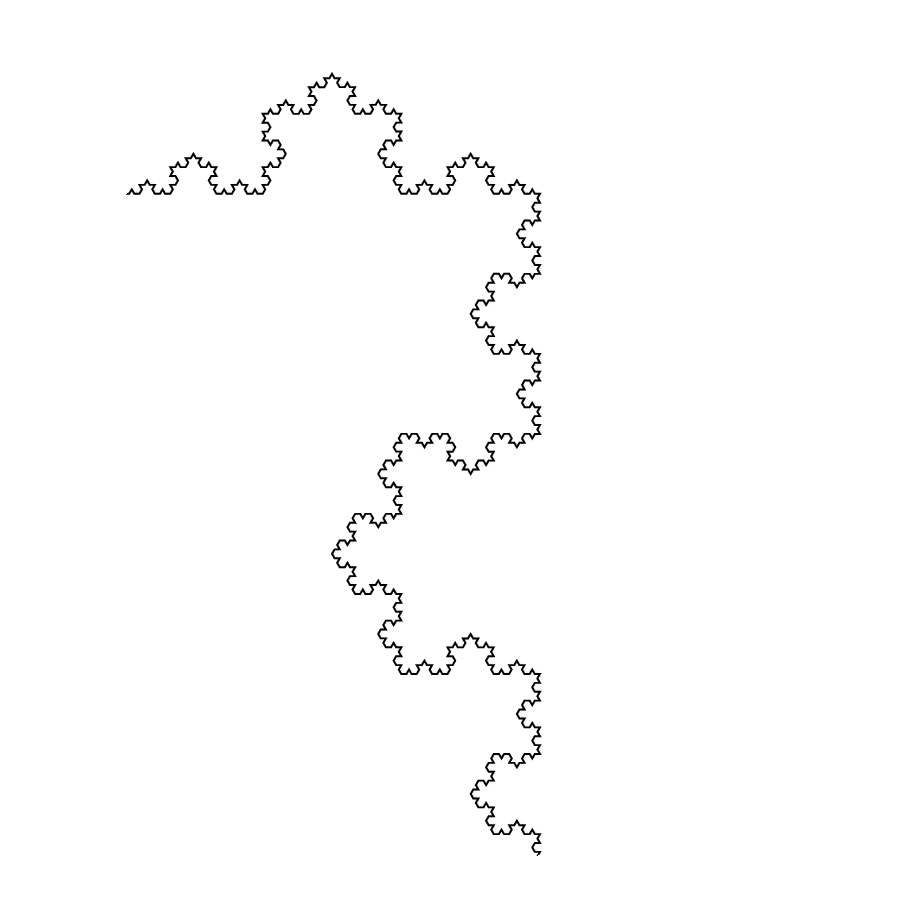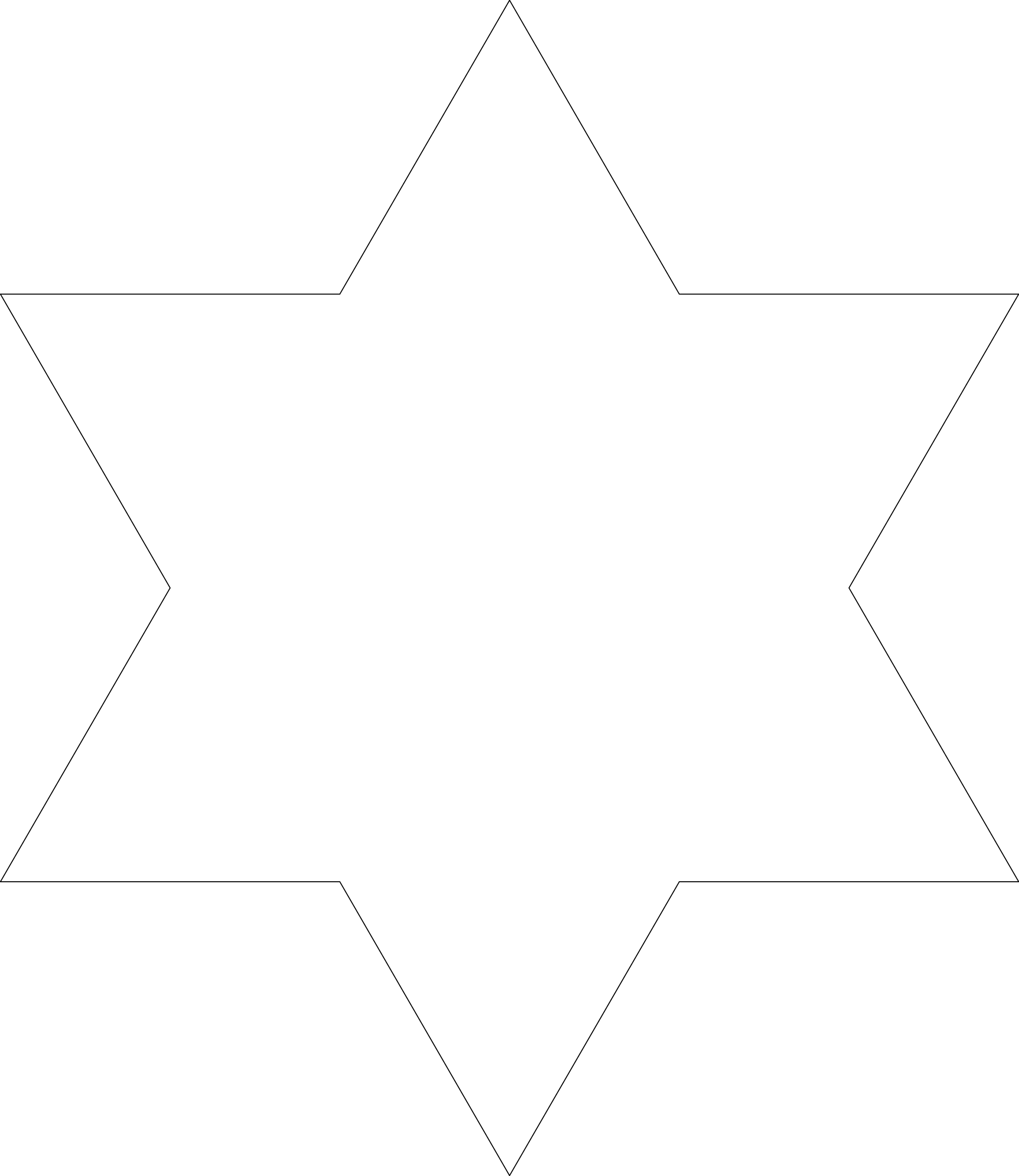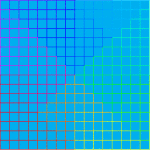
我在 TikZ 中绘制了科赫雪花。我的代码如下。
\documentclass[border=10pt]{standalone}
\usepackage{tikz}
\usetikzlibrary{arrows,intersections}
\usetikzlibrary{decorations.fractals}
\begin{document}
\begin{tikzpicture}[scale=2.2,decoration=Koch snowflake]
\draw[] decorate{decorate{decorate{decorate{decorate{ (-1.732,0) -- (0,3) -- (1.732, 0) -- (-1.732, 0)}}}}} ;
\end{tikzpicture}
\end{document}
我想知道是否可以制作类似雪花的动画动画曼德布洛。我尝试更改这篇文章中的代码,但这对我来说太难了。我可以在这方面寻求帮助吗?
答案1
\documentclass[border=9,tikz]{standalone}
\usetikzlibrary{arrows,intersections}
\usetikzlibrary{decorations.fractals}
\begin{document}
\def\n{10}
\foreach\i in{1,...,\n}{
\tikz{
\clip(-6,-.1)rectangle(6,3.5);
\tikzset{shift={(0,3.4641016151)},scale={pow(3,\i/\n)},shift={(0,-3.4641016151)}}
\draw[decoration=Koch snowflake,opacity=1-\i/\n] {decorate{decorate{decorate{decorate{decorate{(-6,0)--(6,0)}}}}}};
\draw[decoration=Koch snowflake,opacity=\i/\n]decorate{decorate{decorate{decorate{decorate{decorate{(-6,0)--(6,0)}}}}}};
}
}
\end{document}
编辑
还有其他固定点,例如
\documentclass[border=9,tikz]{standalone}
\usetikzlibrary{arrows,intersections}
\usetikzlibrary{decorations.fractals}
\begin{document}
\def\n{20}
\foreach\i in{1,...,\n}{
\tikz{
\clip circle(4);
\tikzset{scale={pow(3,\i/\n)},rotate=60*\i/\n}
\draw[decoration=Koch snowflake]decorate{decorate{decorate{decorate{decorate{(-6.4285714,-1.2371791)--(3.5714286,-1.2371791)}}}}} ;
\scoped[transparency group,opacity=\i/\n]\draw[decoration=Koch snowflake,fill=white]
decorate{decorate{decorate{decorate{decorate{decorate{(-6.4285714,-1.2371791)--(3.5714286,-1.2371791)}}}}}};
}
}
\end{document}
无旋转
答案2
\documentclass[tikz]{standalone}
\usepackage{tikz}
\usetikzlibrary{lindenmayersystems}
\tikzset{
Koch curve/.style = {
l-system={
rule set={F -> F-F++F-F},
axiom=F++F++F,
step=1pt,
angle=60,
#1
}
}
}
\begin{document}
\foreach \order in {1,...,6,5,4,3,2} {
\begin{tikzpicture}
\draw[Koch curve={order=\order,step=500pt/3^(\order)}] l-system -- cycle;
\end{tikzpicture}
}
\end{document}
答案3
你需要 http://tug.org/~hvoss/pst-koch2.sty和http://tug.org/~hvoss/pst-koch2.tex
\documentclass{article}
\usepackage{multido}
\usepackage{pst-koch2}
\pagestyle{empty}
\begin{document}
\multido{\iA=90+-1}{31}{%
\begin{pspicture}(-5.1,-5.1)(5.1,5.1)
\psframe*(-5,-5)(5,5)
\psKoch[N=4,base=squareB,motif=cesaro,angle=\iA,HSB=false,linestyle=none,fillstyle=solid,fillcolor=cyan,linecolor=red]
\psKoch[N=4,base=squareB,motif=cesaro,angle=\iA]
\end{pspicture}\newpage}
\end{document}
还有一张更大的图片:http://tug.org/~hvoss/koch.gif



